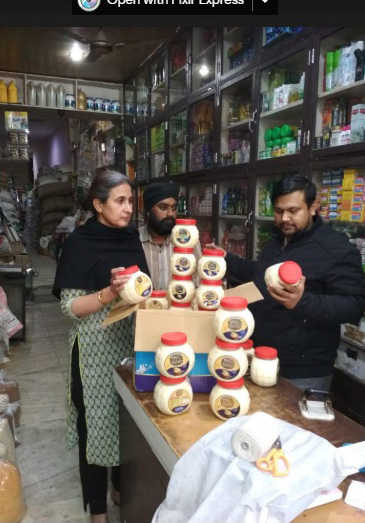Spurious ghee makes inroads into market
Manav Mander
Tribune News Service
Ludhiana, December 7
Confiscation of desi ghee by the Health Department yesterday has brought forth the adulteration going on in eatables unabated. The ghee seized by the department was being sold at Rs 180 per kg while pure desi ghee costs around Rs 500.
District Health Officer Dr Andesh Kang said, “On Thursday, we seized 161 plastic containers of Devki Nandan desi ghee from the Railway road, Khanna. This ghee was being sold for Rs 180 per kg. Pure desi ghee costs around Rs 500.”
Dr Kang said, “People should not opt for less expensive substitutes as it indicates adulteration. One must always buy products which are being sold on par with market price.”
Ghee is mainly adulterated with animal fat, crushed animal bones, palm oil and vanaspati which is hydrogenated vegetable oil and is high in trans-fatty acids. Unsaturated fat is converted into saturated fat during the processing.
According to sources, less expensive varieties of desi ghee were mainly made by small time players who bottle the ghee themselves and sell them at karyana shops. Boxes and tins are without trademark, manufacturing date and is not approved by the Food Safety and Standards Authority of India (FSSAI).
City-based gastroenterologist, Dr Deepak said, “Consumption of adulterated ghee can block circulatory system, damage kidney, liver and digestive system.”
Get food samples tested
If a resident wants to get any food item tested they can get it done from the mobile testing van. Mobile testing van tests the sample and gives the report on the spot. The department charges Rs 50 for testing each sample.
How to check adulteration of ghee
- With coconut oil: Melt some ghee in a glass jar using the double boiler method and pour it into a glass jar and refrigerate it. If coconut oil is there then both ghee and coconut oil will solidify in different layers.
- With starch: Add iodine solution in small amount of melted ghee. If the solution turns purple, it means it is adulterated with starch.
- With vegetable oil: Take one teaspoon full of melted ghee in test tube or bottle. Add a pinch of sugar and shake to mix it. Let it stay for 15 minutes and red colour appearance indicates presence of vegetable oil.
- General testing: Take a spoon of ghee in your palm and if it starts melting then the ghee is pure as ghee melts at body temperature and if not then it is impure.
- Heat one tablespoon of ghee in vessel and if it melts quickly and appears dark brown in colour then it is pure ghee but if it takes longer time to melt and appears light yellow in colour then it is adulterated ghee.










